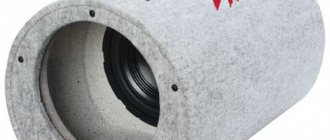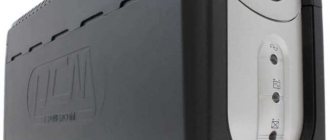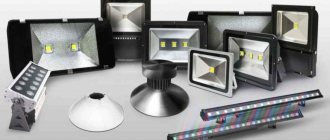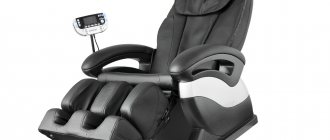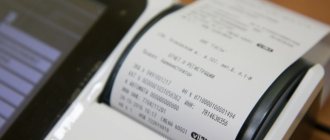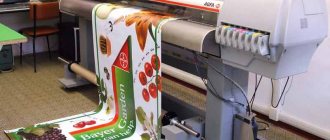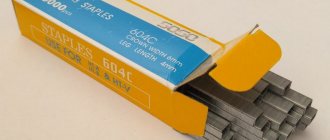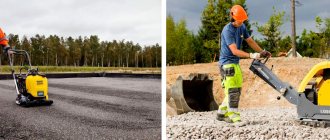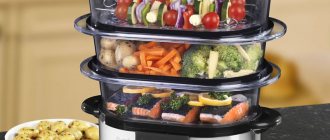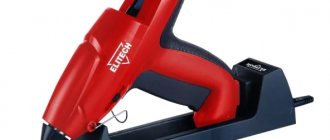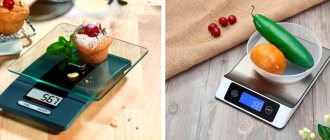| Place | Name | Characteristics in the rating |
| The Best Synthesizers for Beginners |
| 1 | YAMAHA PSR-E263 | The best synthesizer for beginners |
| 2 | CASIO CTK-6200 | Best functionality |
| 3 | CASIO CTK-7200 | The widest functionality in this price range |
| 4 | Medeli M17 | Learning function 110 melodies |
| The best synthesizers for professionals |
| 1 | YAMAHA PSR-S975 | Full-fledged arrangement station |
| 2 | KORG Pa600 | The best ratio of price and functionality |
| 3 | Roland FA-06 | Smallest mass |
| The best synthesizers for kids |
| 1 | CASIO SA-78 | 100 tones. Learning function |
| 2 | CASIO SA-77 | The most popular |
| 3 | CASIO SA-47 | The most compact synthesizer |
All people love music in one form or another. The majority, of course, are simple listeners who are unlikely to be very interested in this article. But there are among you, dear readers, musicians who probably know such an instrument as a synthesizer.
For those who don't know, the synthesizer is something of a Swiss Army knife in the world of musical instruments. It can be used to imitate almost any traditional instrument. It could be a piano, a bass guitar, drums, and much more. In addition, synthesizers can also play accompaniment and apply various effects to the sound. In general, masters of their craft using a high-quality instrument will be able to create a full-fledged work even alone! Of course, some professional musicians are skeptical of this device, blaming it for the “wrong” sound, but let's be honest - the vast majority of us simply cannot distinguish a real instrument from the sound of a synthesizer. And progress does not stand still, and therefore an increasing number of amateurs and professionals use these electronic musical instruments in their creativity.
Synthesizers come in many categories, but we'll focus on just three of them: synthesizers for beginners, kids, and professional instruments. Our rating will help you choose the best device in each price category. But first, let's look at the best manufacturers.
The best synthesizer manufacturers
- Yamaha _
The history of the company dates back to 1887, when Thorakusu Yamaha, the founder, manufactured a high-quality organ. Now the Japanese company also produces a variety of motorcycles and sports equipment, but the music division is one of the main ones. The excellent quality of synthesizers, good sound and reasonable prices have made Yamaha synthesizers the favorites of many musicians around the world. - Korg .
And again we have a Japanese company. The history of this company is relatively short - Korg was founded only in the early sixties, but has already managed to win enormous recognition from famous musicians. The main advantages of the company's models include a sampler, a built-in high-quality sound reinforcement system, and much more. For example, the Korg Triton Studio workstation is currently considered one of the most powerful in the world. - Roland .
I think there is no need to name the country where this company comes from. The Japanese have once again managed to create excellent products, including not only synthesizers, but also other musical equipment. The main distinguishing feature of Roland models is their reasonable price and rather small dimensions and weight compared to competitors. - Casio .
In 1957, this company became one of the very first to dare to produce a completely electronic calculator. Currently the company produces calculators, watches and musical equipment. The latter is not very popular among professional musicians, but the quality of the products is at a very high level and is constantly growing.
The Best Synthesizers for Beginners
The instruments from this group are addressed not only to beginning musicians, but also to those who would simply like to “strum” for their own pleasure. Their device is relatively easy to understand, because the functionality does not have a huge variety, like on professional devices, and the price is affordable enough for buyers to afford such a device simply as a toy.
Such models are also suitable for amateur musicians who, as a rule, do not have extra funds to purchase expensive equipment. Still, we are not considering children’s models, but full-fledged working tools with high-quality sound.
The competition among manufacturers in this segment is quite high, and therefore we recommend that you familiarize yourself with our top three synthesizers for beginners in the ranking.
Doepfer A-100
Doepfer A-100
Year of issue: 1995
By the mid-1990s, with the rise of more affordable and versatile digital and software synthesizers, classic modular systems had become obsolete technology. Around the same time, the German engineer Dieter Dopfer started his business, creating a module for the FORMANT and collaborating with Kraftwerk. Despite the state of the market, Dopfer believed that modular systems still had a place in music and only they could create sounds that were “inaccessible” to digital synthesizers and sampling.
The German decided to create a system that would have high-quality sound, offer a large selection of modules, could be used with MIDI devices and, most importantly, would have an affordable price. The result of the work was the Doepfer A-100 - one of the most compact modular devices, which, thanks to its 3U form factor, easily fits into a standard studio rack supplied with the instrument. The Dopfer system turned out to be very popular - other companies began to develop their own expansion modules for it, and the A-100 itself laid the foundation for the international Eurorack standard.
The number of companies producing Eurorack equipment has grown rapidly - ten years ago there were no more than ten such companies, today there are more than 100 of them. Even Roland and Moog could not resist the standard, which in 2015 recognized the impracticality, cumbersomeness and high cost of ordinary modular systems and began production own Eurorack modules.
“Today there are more than a hundred companies on the market that produce thousands of modules. Dealers and suppliers are already going crazy with oversupply,” Dopfer said in a 2015 interview with Ableton. “Until today, such market growth did not cause concern - manufacturers created more and more exotic and unusual modules, developed technologies and moved the whole thing forward. But now we need to pause and think about how we will develop modular systems further - the situation is approaching a critical point and reminds me of how the stock market overheated a few years ago, which led to a global crisis.”
It's hard to say whether the Eurorack system market is a bubble that will burst soon. The wealth of functionality of modules produced today is truly enormous: analog and digital synthesis, drum machines, samplers, all kinds of effects and processing, and much more. Eurorack has penetrated into all styles of music - the systems are used to create techno (Simian Mobile Disco, Karenn, Surgeon & Lady Starlight), experimental (Robert Aiki Aubrey Lowe, James Holden) and, of course, popular music (Radiohead, Coldplay). The standard Dopfer created forever changed the way people thought about how music was made.
In 2011, Trent Reznor , during the filming of the documentary I Dream of Wires, was able to explain the popularity of Eurorack: “They brought back a certain magic to the world of synthesis that had not been seen since the early electronic instruments of Korg, Yamaha and Roland.”
The best synthesizers for professionals
Professionals are demanding people who can do a lot, and therefore the functionality of entry-level synthesizers is no longer enough for them. Manufacturers develop high-quality tools especially for them, which, unfortunately, cost a lot of money. What is the reason for the increase in cost by at least 4-5 times?
First of all, it is worth noting that the functionality has expanded significantly. The models in our rating are able to reproduce, record and process approximately 10 times more sounds. At the same time, no one will teach you how to use all this, so there is no place for beginners here. Secondly, the presence of professional ports, which provides better sound quality. And yes, in this category, rare models have built-in acoustics. We bought a synthesizer for 100 thousand - if you please, buy high-quality speakers or headphones for it. Finally, quality - without exception, all models for professionals will have excellent build quality and sound, as well as high reliability. You can look at the best synthesizer models for professionals in our rating.
Professional synthesizers
Roland FA-06
It has a plastic case, due to which this device does not weigh too much for professional equipment - only 5.7 kg. For an instrument with 61 keys, the overall dimensions are also small - 100x30x10 cm. All connectors for connecting additional devices, including the power cable, are located on the rear panel. The product is equipped with anti-slip rubber feet. The connector for the power supply is additionally reinforced with a rubberized ring, thanks to which the plug is fixed as tightly as possible. Near it there is a special jumper that allows you to secure the cable and protect it from accidental jerks. There is a line output for using a connection in stereo format with the ability to balance channels.
More: Top 10 best ski masks, how to choose a good mask for skiing
The keys have a short stroke and quickly return to their original position. They are a real pleasure to play, although they will take some time to adapt to. The interface of the synthesizer is quite simple, so you can start working with it without studying the instructions. All main functions have separate buttons and controls. The synthesizer boots up very quickly after switching on - about 10 seconds is enough. A large full-color LCD display is located in the center. Although it is quite informative, it will not show unnecessary data. All sounds produced are sorted into sections.
Advantages:
- High speed;
- Large color display;
- Possibility of connecting a stereo system;
- Ease of use.
Flaws:
- The key travel is short - you have to get used to it.
Roland FA-06
Synthesizer Yamaha PSR-SX700
The device offers the user literally perfect sound, a wide range of different instruments and increased functionality. Compared to the previous generation of professional synthesizers, the device has an improved design, a keyboard of the highest quality, and an optimized FX section. The latter includes a set of equalizers, compressors, reverbs and many other effects. The synthesizer supports polyphony of 128 voices and has an AWM tone generator. There is an organ-type keyboard installed here, consisting of 61 keys, FSB format. The response can be adjusted. The acoustic system is represented by two speakers, the power of each of which is 15 W. For ease of control of functions, there is a touch-type display, the diagonal of which is 7 inches, there is also a joystick, many buttons, three regulators and an encoder.
If necessary, the keyboard can be divided into four independent zones, with specific instruments assigned to each of them. Buttons are usually used to work with settings and effects. The library consists of 1027 presets consisting of keys, percussion organs and so on, as many as 400 rhythmic patterns are provided for accompaniment. Among the connectors there are inputs for connecting a guitar, a microphone, the built-in memory capacity is 400 MB, there are also two USB connectors, and the same number of outputs for pedals. The weight of the device is quite serious - 12 kg.
Advantages:
- Quite loud sound;
- Wide range of possibilities;
- All necessary additional connectors are available;
- Excellent workmanship of the instrument;
- Reasonable price for a professional synthesizer.
Flaws:
- Not detected.
Yamaha PSR SX700 Demo
Synthesizer Yamaha PSR-SX700
KORG Pa600
The synthesizer is a fairly powerful professional-type arrangement station, which is very popular among professional musicians. It has an automatic accompaniment function. The keyboard here is unweighted, has 61 keys, and they are sensitive to both speed and pressure. The model is equipped with powerful polyphony of 128 voices. There are even more tones - over 950, and there are also enough accompaniment styles for professional use - more than 360. The drum set includes 64 variations. In the central part of the product there is a fairly large touch-type liquid crystal display, the diagonal of which is 7 inches with a resolution of 800x480 pixels. This allows you to quickly adjust any user settings, make changes to them, save them, and so on.
The equipment memory is designed for 1200 user styles, there is 96 MB of RAM. You can use all the capabilities of this equipment directly during a performance - this is exactly where the touch screen will be useful. The sound quality is very high, so the instrument is suitable even for performances in philharmonic halls or conservatories.
Advantages:
- The kit includes a control pedal;
- A touch display is provided;
- The synthesizer is equipped with a transpose function;
- Has a built-in mid-power speaker system;
- Convenient to use.
Flaws:
- High price.
KORG Pa600
The best children's synthesizers
Synthesizers for children have a smaller keyboard and a more modest set of functions and effects. They are quite compact, can have fun, bright colors and a learning option that helps the child master the instrument. When asked which synthesizer is best to buy for a child, experts give mixed answers and in our rating they present three models that received the highest ratings.
Denn Dek 61 mini
This is a compact and quite functional synthesizer for children with a learning option. It has 61 small-sized keys, a small display and 4 built-in polyphonic ringtones. You can connect a microphone or headphones to the Denn Dek, but the device only works from the network and does not have a USB output. There is also an auto accompaniment for 10 styles, the ability to record songs and 16 tones, which allows you to use the instrument to develop your musical abilities. Control of the model is simple, and users note that children quickly learn to play this synthesizer.
Advantages
- Built-in speaker system;
- Voice overlay function;
- Loud noise;
- Light weight;
- Low price.
Flaws
- Not the best build;
- The speakers hiss, even in quiet mode.
The device is not able to remember volume settings, which many buyers also consider to be a disadvantage. However, the low price and good sound make this model one of the most popular among children's synthesizers.
Casio SA-77
The Casio is more optional than the previous model, it also has a learn mode, can be battery operated, plus it comes with 50 auto accompaniment styles. The SA-77 model has a button to switch between piano and organ sounds, 10 built-in learning melodies that will help your child master the instrument faster. 8-note polyphony and 100 built-in tones will allow you to create your own melodies or even add drum sounds to them. There is a small display that shows the staff or the specified parameters. There is also an output for connecting headphones, and if you buy an additional adapter, you can connect the device to work from the network.
Advantages
- Interesting retro design;
- Melody mute function;
- Built-in speaker system;
- Good amplifier power;
- The keyboard is adapted for children's hands.
Flaws
- There is no USB connector;
- You cannot connect a microphone.
Buyers also include a relatively high price as a disadvantage for such a low-power model. However, reviews of the Casio SA-77 synthesizer are quite flattering, and its build quality is very reliable.
Sonata SA-5401
The sonata is a fairly high-quality instrument that is suitable not only for children, but also for beginning musicians. It has a small keyboard with 54 keys, runs on mains or batteries, and the device interface is completely Russified. The kit includes a microphone that connects via the line input. There is a built-in acoustic system that allows you to play the instrument simply by connecting it to the network. The number of tones is one hundred, including classical and non-orchestral instruments, and the auto accompaniment is also designed for one hundred styles, which helps create different rhythms. There are also 10 demo sounds in the instrument program.
Advantages
- Bright LCD display;
- Possibility of recording music;
- Good, clear sound even at full volume;
- Adjustment of tempo and volume;
- Small price.
Flaws
- The plastic buttons are very hard;
- No polyphony.
Meanwhile, the price of this children's synthesizer with a microphone is quite modest, which is positively noted by users. This is one of the best models of children's synthesizers that are presented in stores today.
